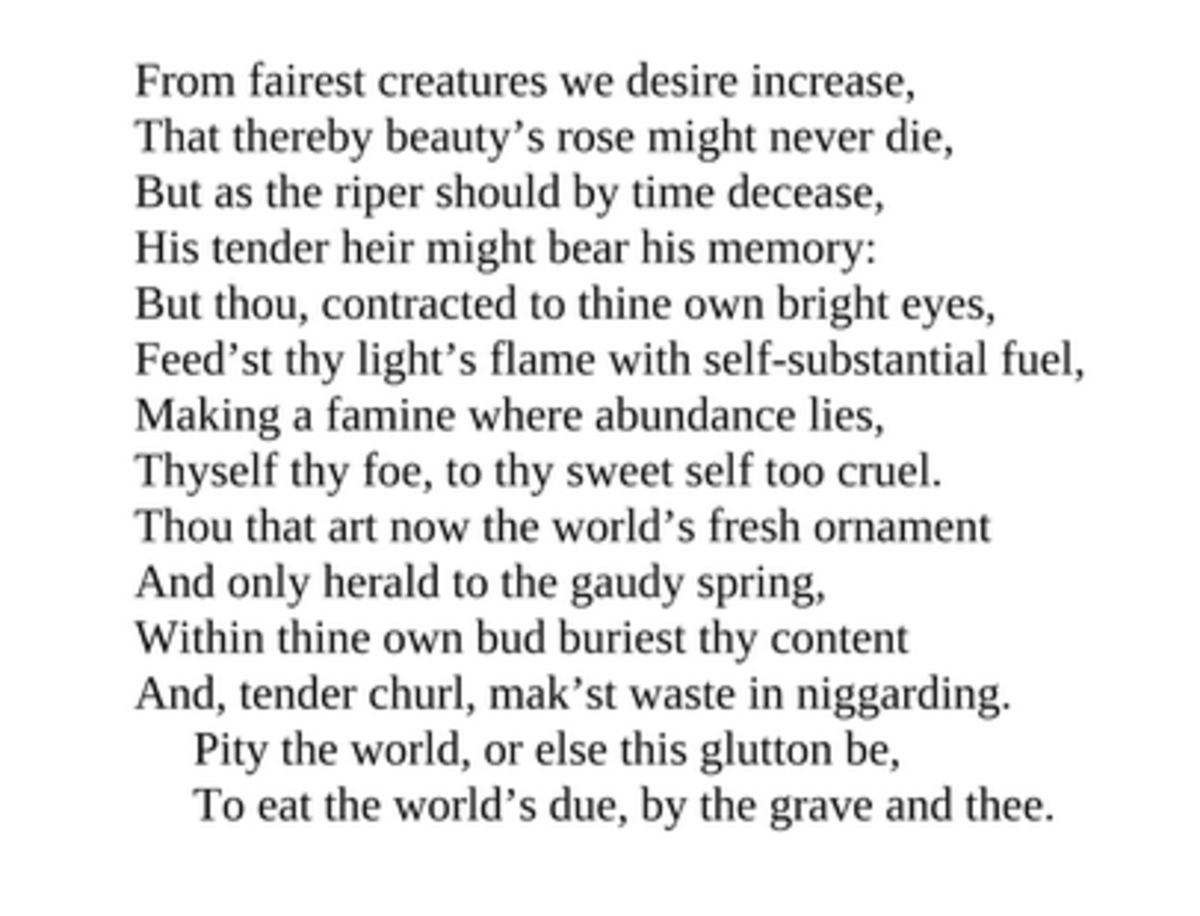

Shakespeare’s sonnets helped to increase his prominence as a poet with a unique style.

In addition, some of the later sonnets in the series are written about a Dark Lady and focus on degrading sexual desires. In these sonnets, Shakespeare is reiterating to the young man that it is his duty to marry and have kids, urging him to reproduce so that his physical beauty will be eternalized through future generations. The vast majority of these sonnets are addressed to an unnamed attractive young man who represents beauty, love, and praise. Shakespeare’s sonnet sequence is comprised of 154 sonnets that were published in 1609. It arrived in England in the mid-16th century and is still much used by poets writing in English.Title Page of Shakespeare’s Sonnets (1609) The Italian form was perfected by the poet Petrarch, who gave his name to it. The sonnet originated in 14th-century Italy. The Day Dream, by Dante Gabriel Rossetti, 1880Īntimony cup inside an inner leather box and an outer straw box, by The Antimony Cup Ltd, Peterborough, England, about 1720. She dreams till now on her forgotten bookĭrops the forgotten blossom from her hand. Lo! tow'rd deep skies, not deeper than her look, Like woman's budding day-dream spirit-fann'd. Their spiral tongues from spring-buds heretofore.ĭreams even may spring till autumn yet none be Yet never rosy-sheathed as those which drew The embowered throstle's urgent wood-notes soar Perched dark, till now, deep in the leafy core, Still bear young leaflets half the summer through įrom when the robin 'gainst the unhidden blue THE thronged boughs of the shadowy sycamore The following example, by the poet and artist Dante Gabriel Rossetti, is about one of his own paintings, The Day Dream, which is now in the collections of the V&A.



 0 kommentar(er)
0 kommentar(er)
